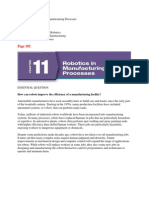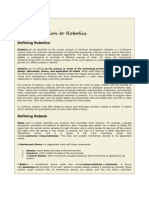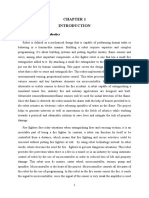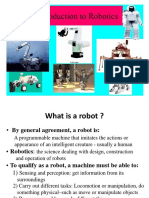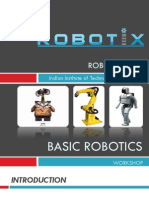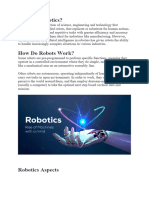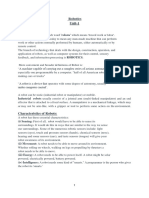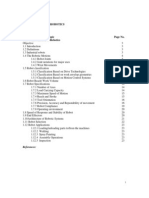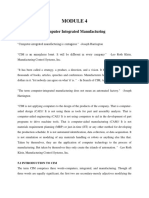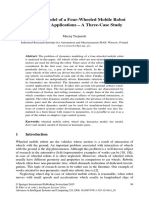0% found this document useful (0 votes)
99 views7 pagesFire Detection Robot
This document describes a fire detecting robot. It discusses the components and functions of robots including sensors, assembly instructions, advantages and disadvantages of robots. The robot uses a UV sensor to detect fires and is programmed to navigate mazes and enter rooms to identify flames. It has a body, motors, sensors, power source and computer brain like humans. The robot can improve safety, productivity and save time and money but also has high costs and requires training to operate.
Uploaded by
santoshi reddyCopyright
© © All Rights Reserved
We take content rights seriously. If you suspect this is your content, claim it here.
Available Formats
Download as DOC, PDF, TXT or read online on Scribd
0% found this document useful (0 votes)
99 views7 pagesFire Detection Robot
This document describes a fire detecting robot. It discusses the components and functions of robots including sensors, assembly instructions, advantages and disadvantages of robots. The robot uses a UV sensor to detect fires and is programmed to navigate mazes and enter rooms to identify flames. It has a body, motors, sensors, power source and computer brain like humans. The robot can improve safety, productivity and save time and money but also has high costs and requires training to operate.
Uploaded by
santoshi reddyCopyright
© © All Rights Reserved
We take content rights seriously. If you suspect this is your content, claim it here.
Available Formats
Download as DOC, PDF, TXT or read online on Scribd
/ 7







